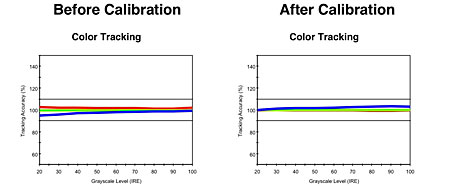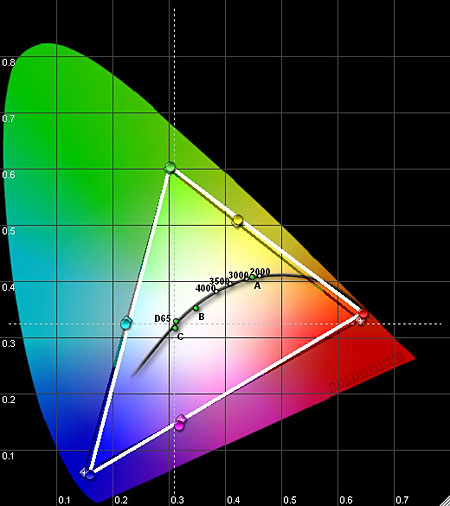Sony BRAVIA XBR-52HX909 LCD 3D HDTV HT Labs Measures
Black: 0.000
White: 32.8
Full-On/Full-Off Contrast Ratio: Unmeasurable
The measurements here were taken in the Custom Picture Mode, through an HDMI input.
The XBR-52HX909’s blacks and contrast ratio, particularly in 2D with the LED Dynamic Control (local dimming) in Standard are exceptionally good, with only minimal local-dimming side effects (occasional halos around bright objects set against a dark background). With a black-level reading of 0.000 foot-lamberts, calling the full-on/full-off contrast ratio infinite might be defensible, but it’s more accurate to call it unmeasureable with the test tools available to us.

The results above were taken in 2D, with the Backlight on 3, the Picture control on 75 (Sony calls its contrast control “Picture”), the LED Dynamic Control on Standard, and the Brightness control on 50. The corresponding readings for 3D operation were 9.9 ft-L peak white and 0.002 ft-L black, for a full-on/full-off contrast ratio of 4,950:1. These 3D measurements were taken with 2D test patterns, the set’s 2D-to-3D mode engaged, and one eyepiece of Sony’s 3D glasses placed in front of the meter. For 3D, the Backlight is set to Max by default and is nonadjustable, Picture defaults to Max but is adjustable (it was left on Max for viewing and measurement), the Brightness was on 50, and the LED Dynamic Control was off (it’s not available in the 3D Custom mode). While you can get higher 3D brightness and punch in other settings (such as using the Standard or Vivid Picture Mode instead of Custom, or by engaging the Advanced Contrast Enhancer), I felt that these options produced a less natural-looking image.
When I changed the LED Dynamic Control from Standard to Low, in 2D, the black level degraded to 0.002 ft-L (still good); when I turned it to Off, the blacks increased to 0.015 (poor when compared to most of today’s best sets).

The Sony’s color performance was reasonably good out of the box, but calibration improved it further. The results are shown in the Color Tracking Chart (for 2D). The Delta E for 2D even before calibration ranged from just under 2 to 3.8 from 40 IRE (fairly dark) to 100 IRE (peak white), increasing to 4.8 at 30 IRE (dark) and 5.8 at 20 IRE (darker). After calibration, the Delta E was under 3.6 at all levels and under 2.9 below 70 IRE.
After a separate 3D calibration (using the same technique referenced above in the contrast discussion), the results, while slightly different (not shown), were arguably even better than in 2D, with Delta E readings under 2.9 across the full brightness range.—TJN














































